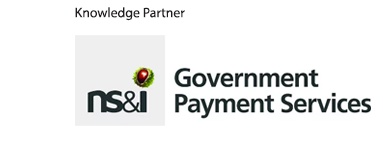Cloud computing: the future of public sector analytics

The COVID-19 pandemic has driven governments to accelerate their digital transformation programmes and to focus more closely on data. In this partner content piece, Dr Steve Bennett, director of global government practice at analytics software specialist SAS, explores the possibilities of more robust data analytics strategies and explains how the company is working with Microsoft to help the public sector take full advantage of the cloud.
Never before have we seen enterprises adapt and transform as rapidly as they have since the arrival of COVID-19. In the private sector, this has come relatively easily (even if the execution is hard): meet the customer where they are, expand infrastructure to meet ballooning digital demand, and enable legions of employees to work remotely. But to truly understand the impact of the pandemic on technology adoption, watch as governments — sometimes perceived as slower to adopt digital transformation — become agile champions of the cloud.
I spoke to Daniel Sumner, worldwide director of smart infrastructure at Microsoft, who helped illustrate the unique advantages that SAS and Microsoft’s new strategic partnership can lend to governments of all locations and sizes. From connecting and drawing insight from city-wide Internet of Things (IoT) footprints to reversing entire tax systems in a matter of days, only the cloud can meet the new demands placed on the public sector. It’s simply a matter of good government.
Compounding the value of the cloud
Well before the global pandemic, governments had begun expanding their digital footprints, despite barriers such as siloed and legacy infrastructures. When I worked in biosurveillance at the U.S. Department of Homeland Security, we used analytics to understand new health threats and we had two challenges that were a constant headache: one was storing data and remaining compliant; the other was managing a large collection of tools to enable machine learning and predictive analytics, allow visualisation and dashboards, and for optimisation purposes.
Even then, it was clear that we needed an end-to-end analytics solution that brought these tools together and a secure and scalable platform to host them on. This is why I’m so excited about the new SAS and Microsoft partnership.
Nobody meets the compliance and security needs of the public sector like Microsoft. Its Azure cloud computing service provides unparalleled control of data, and SAS is augmenting those benefits with Viya, a data analytics platform designed for Azure that enables analytics across the entire spectrum.
Sumner, whose 15 years of experience at Microsoft includes building innovative solutions for cities around the world, spoke to the value of cloud-native analytics solutions. Citing the tremendous volumes of data created by IoT technology (Cisco predicts devices connected to IP networks will amount to more than three times the global population by 2023), Sumner pointed out that “for someone to make sense of all that data and see patterns in it is a monumental challenge — let alone make predictions from it. There’s so much potential with SAS, which has that inherent knowledge of understanding and interpreting data analytics with the ability to execute on that data”.
Combining SAS’s analytical expertise and tools with Azure’s global, secure, and compliant cloud can help government agencies innovate and achieve faster ‘time to value’. But what does that mean on the ground?
The power of data in government
SAS strives to empower customers to innovate, advance human achievement and positively impact society. There’s no better test case for these ambitions than in government. Take the Netherlands’ water management system. One-third of the country is below sea level, making transparency in water management paramount for both efficiency and public safety. SAS helped analyse real-time data from 15,000 sensors to identify changes in infrastructure and water flow so the government could act quickly and with precision to mitigate potential flooding.
At a more local level, sensors in streets can work in tandem with weather forecasts to predict whether gritting roads for icy conditions that may never materialise is worth the cost. These predictive analytics applications have immense effects on city budgets, and more importantly, human lives — but they wouldn’t be possible without the scale of the cloud.

“You may not think of a government or city council as having a large IoT estate,” Sumner says, “but think of light poles, luminaires, air quality sensors, water meters, and water quality management systems. All of these are connected and generating a huge amount of data.”
With SAS Viya on Azure, we can be more efficient in identifying patterns and, even better, we can make predictions about them.
As governments are compelled by climate change to make commitments around sustainability, carbon management, transportation, or emergency response, the importance of a connected data system that can drive predictive insights becomes clear. Natural disasters are increasing at unprecedented rates, and it can cost local government tens or even hundreds of millions of USD to recover.
But the motivations for adopting analytics in the cloud doesn’t stop there. Analytics help governments identify fraud and can help police become more efficient in investigations. And in the healthcare space, we’re using analytics to find anomalies in public health, figure out how to optimise hospital bed usage, and manage a supply chain for personal protective equipment in the wake of COVID-19.
The possibilities of powerful analytics in government are truly exciting. Our focus now is helping public institutions embrace the cloud quickly to drive tangible results.
‘Time to value’
COVID-19 has helped us realise that digital transformation can happen anywhere, in any timescale. I had one client who had a seven-year plan for digital transformation. When coronavirus hit, they had to deliver that plan in just four days to get benefits out to citizens in need.
Likewise, when the UK government needed to distribute fiscal stimulus, SAS helped Her Majesty’s Revenue and Customs (HMRC) run its entire national tax system in reverse.
Still, it’s not just nations and major cities that need to advance their analytics strategies. We want to address every city and every government. That starts by answering the question: how can growing cities deploy the right tools on the right timeline and on budget?
“Cities don’t have the expertise internally to deploy these tools, so we’re not asking customers to invest in huge data centres and spend their precious budget on data capture and data storage,” Sumner says. “We’ve reached a point where Microsoft and SAS can offer this as a service.”
This new offering is built on deep integrations of the SAS Viya platform with Azure services, including Azure Kubernetes Services (AKS), Microsoft Active Directory, Azure Synapse, and more. This allows for the delivery of a fully integrated, end-to-end cloud-native analytics solution. Now, cities can transform their analytics while consuming on a per-unit, per-sensor, or even per-square-mile basis. This enables governments to go to one place to manage all of their data headaches, as well as all of the insights they gain.
The citizen experience
Sumner predicts the ‘customer satisfaction’ mentality motivating businesses will start to drive government decisions around digital technology and data. And that means making actions like applying for a driver’s license or city permits easy to do online.
These steps can reduce municipal costs while improving the citizen experience. After all, as Sumner says, “citizens are expecting a level of performance that they experience in the consumer world”.
You can accomplish these missions faster and at a lower cost thanks to SAS’s strategic partnership with Microsoft.
Governments have an enormous responsibility to keep citizens safer, to reduce unnecessary spending, and frankly, to make daily life more enjoyable. We, at SAS, take that responsibility seriously, and are hard at work on the next generation of analytics technology that will help the public sector reap the benefits of the cloud, and improve the citizen experience.
To learn more, download the free e-book: Reimagine Analytics in the Cloud With SAS® and Microsoft Azure.
About the author

Dr Steve Bennett is the director of global government practice at SAS. With twelve years of experience in the U.S. Department of Homeland Security, he has a passion for improving the speed and quality of public sector decision-making through analytics.
For further information, please email [email protected] or visit the website here.
Global Government Forum published an interview with Bennett – Power with responsibility: deploying AI in the struggle against COVID-19 – in May. You can read the interview here.

















